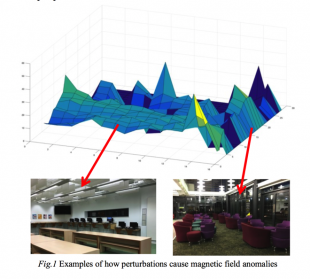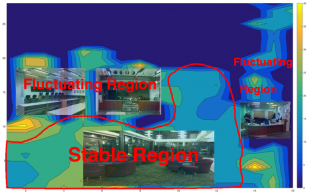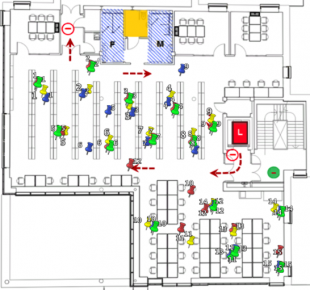The seamless indoor and outdoor positioning is currently becoming a dominating technique that deluges location based services market with good applications. Among them, the communications networks accurate, reliable and real-time positioning systems are drawing more attention. Currently, the outdoor positioning has generally achieved an accuracy and reliability high enough to enable users to navigate using global positioning system (GPS)-based localisation and navigation techniques. However, GPS does not work properly in indoor environments because the transmission signal between GPS receivers and satellites is attenuated and significantly degraded by the structure of the building and dense multi-path propagation.
The use of several systems and technologies have been proposed to construct and enhance the efficiency of indoor positioning systems, such as GSM, Wi-Fi and Bluetooth technologies. Fingerprint-based positioning system can determine the likelihood of targeting an indoor location directly using the information received from users to match with a pre-recorded database of known resource-location information. In the past few decades, fingerprinting techniques based on RSSI of RF signals have been designed by various researchers, such as Wi-Fi and FM. Recently, MF-based location fingerprinting techniques are emerged for use in indoor navigation system.
Theoretically, the Earth’s magnetic field (EMF) is an omnipresent and location-specific signal. There are several ways to exploit the MF for localisation purposes.Compared with other existing indoor localisation strategies, the MF system is cheaper and more energy-efficient while possessing the same precision, and it uses built-in EMF sensors on smartphones without any extra infrastructure.
However, Sometimes the MF based indoor positioning system might not work well for a number of significant reasons, such as the signal disturbance or the sensitivity limitations of the sensors embedded in mobile phones. In these researches, we aim to figure out an optimal magnetic field based indoor positioning system which can provide a satisfied accuracy result for localisation.
1. Region-based KNN Algorithm for Magnetic Field Indoor Positioning
Generally, K-Nearest Neighbour (KNN) is a matching algorithm widely used in fingerprint-based indoor positioning systems to estimate the user's location. However the standard KNN algorithm takes a general value of K for the matching algorithm. A region-based KNN algorithm can conduct suitable selection and partitioning in the target position before calculating the most appropriate KNN.
The main objectives of the research are:
- To study the EMF signal in a target area and propose an algorithm to divide an area into several region
- To critically assess the suitable K for different region areas
- To propose an algorithm to make use of the different K for different region and study how it can improve the positioning accuracy
2. Camera-aided Region-based Magnetic Field Indoor Positioning
It has been shown that local magnetic field (MF) anomalies can be used in accurate global self-localisation with fingerprinting. However, MF anomalies can only affect limited areas, and the low discernibility of received local MF signals may result in many positions having the same MF-Location information in areas far away from disturbances. This is mainly due to the sensitivity limitations of sensors embedded in mobile phones. This makes it challenging to distinguish between different positions with the same MF value. To address this problem, the project proposes a new region-based multipronged indoor positioning system, which takes maximum advantage of MF-based indoor positioning. Unlike using MF positioning alone for the whole training space, the basic idea of this multipronged system is to use camera-based positioning in areas with fewer disturbances to assist MF positioning targeting attaining a more location estimates.
Recent Publications:
[1] Y. Du, T. Arslan and A. Juri, "Camera-aided region-based magnetic field indoor positioning," 2016 International Conference on Indoor Positioning and Indoor Navigation (IPIN), Alcala de Henares, 2016, pp. 1-7.
[2] A. A. Juri, T. Arslan, Y. Du and Z. Wang, "Dual scaling and sub-model based PnP algorithm for indoor positioning based on optical sensing using smartphones," 2016 International Conference on Indoor Positioning and Indoor Navigation (IPIN), Alcala de Henares, 2016, pp. 1-5.
[3] Y. Du, T. Arslan, and A. Juri, “A Region-based KNN Algorithm for Magnetic Field Indoor Positioning,” in 2016 International Navigation Conference (INC), Glasgow, 2016.




